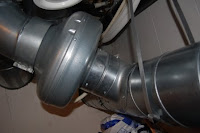In todays issue of Dagens Naeringsliv, Sofie Mathiassen says "High energy prices are the solution to both the climate crisis and the current issue with watersupply". In the section "Unfiltered" she included a quote from our Finance Minister Sigbjørn Johnsen (in a letter to the Parliament 16 February 2010 about the cuts in taxes on electricity):
"The price increase is a signal of scarcity in the market and motivates households and businesses to save power."
She goes on to discuss the cost of CO2-reducing projects domestic and abroad. "Why" she asks "should we insist on CO2 cutting projects in Norway - when the same amount of money can give much more CO2 cuts in developing countries?". The climate does not care whether the CO2 cut comes from Norway or from somewhere in Africa.
Comments:
On November 26th (2009) my blog-post was titled "Higher energy prices? Yes please". I do of course appreciate the fact that the journalist Sofie Mathiassen share my views - on page 2 in Dagens Naeringsliv (many politicians will read this).
"Food for thought":
- The building and construction sector has among the highest levels of unemployment in Norway (7.2%)
- Low interest rates was expected to drive more projects when the spring comes, but the Norwegian Central Bank (Norges Bank) and politicians worry about inflation. We can therefore expect increases in interest rates in the months to come.
- Higher interest rates will lead to more unemployment
- Fewer building- and construction jobs
- The export industry will find it more difficult to sell their products to other markets (makes our currency more valuable - and hence our products more expensive to foreign buyers).
- If, however, the government introduced an extra tax on electricity rather than increasing the interest rates?
- Inflation pressure would decrease (the share of your wallet available for shopping is reduced - either you pay more to your bank or to the utility company)
- More projects (both new buildings and refurbishment projects) would be initiated, and unemployment in the building- and construction sector would therefore come down
- CO2 emissions and the demand for energy (and hence and the pressure on electricity prices) and would be reduced
- Would energy-intensive industrial heavyweights face trouble if energy-prices are increased further? Politicians have already granted these companies special (lower) electricity prices, and will have to continue to consider the prices versus the risk of CO2 leakage (industry moving to other countries where the energy is cheaper, but more "dirty").
- Other export industry would most likely prefer such an el-tax to higher interest rates
Rather than burn fossil fuels (oil/gas) offshore with considerable amounts of CO2 emissions as a result (like the traditional offshore oil fields), they now pull clean energy from the Norwegian mainland power-grid. The electricity to drive this offshore installation comes from the part of the Norwegian grid where there is a big gap between supply and demand these days. Electrifying this oilfield has therefore contributed to the record high energyprices in this region.
Electrifying oilfields will generate more demand for clean energy and so will electrifying the transport sector. It is therefore important that we prioritize projects that will reduce energy demand in other sectors. As mentioned earlier - it is currently much cheaper to reduce the demand than to generate additional energy (fossil or renewable).
Event 2: IPCC chief Pachauri to face independent inquiry
Environment and Climate ministers meeting in closed session in Bali last night insisted that an independent review should be carried out following the publicising of mistakes in its last report, and a row surrounding Dr Pachauri's robust response to his critics. If his management is found to be at fault his position could become untenable.
The ministers regard the mistakes as exaggerated, point out that they just concern a few sentences in a 3000 page report, and say they do not in any way undermine the basic science behind global warming. Their main concern has been over the aggressive way in which Dr Pachauri has responded to criticism, beginning with denouncing Indian research suggesting that the glaciers were not melting so rapidly as “voodoo science”.




























